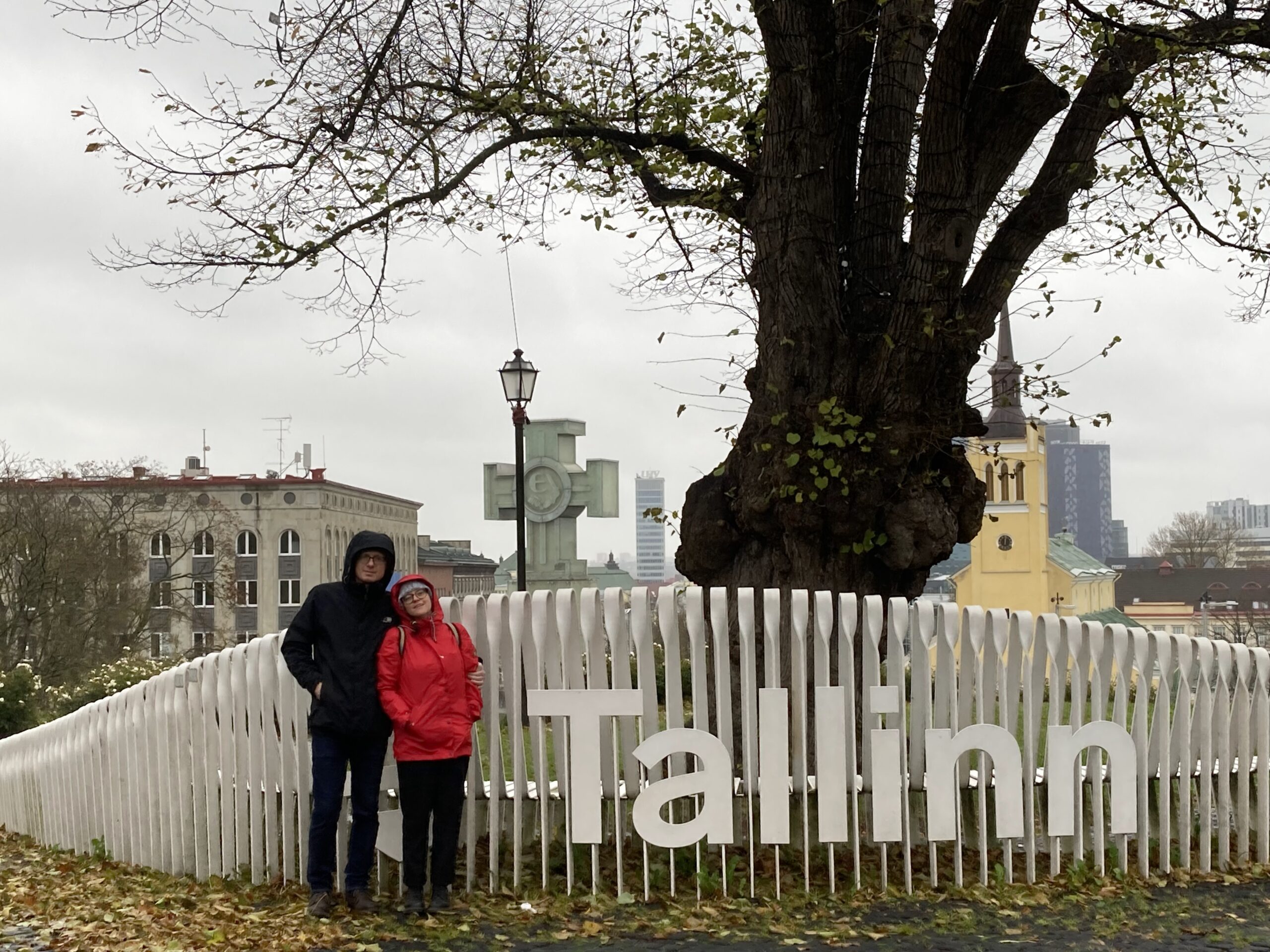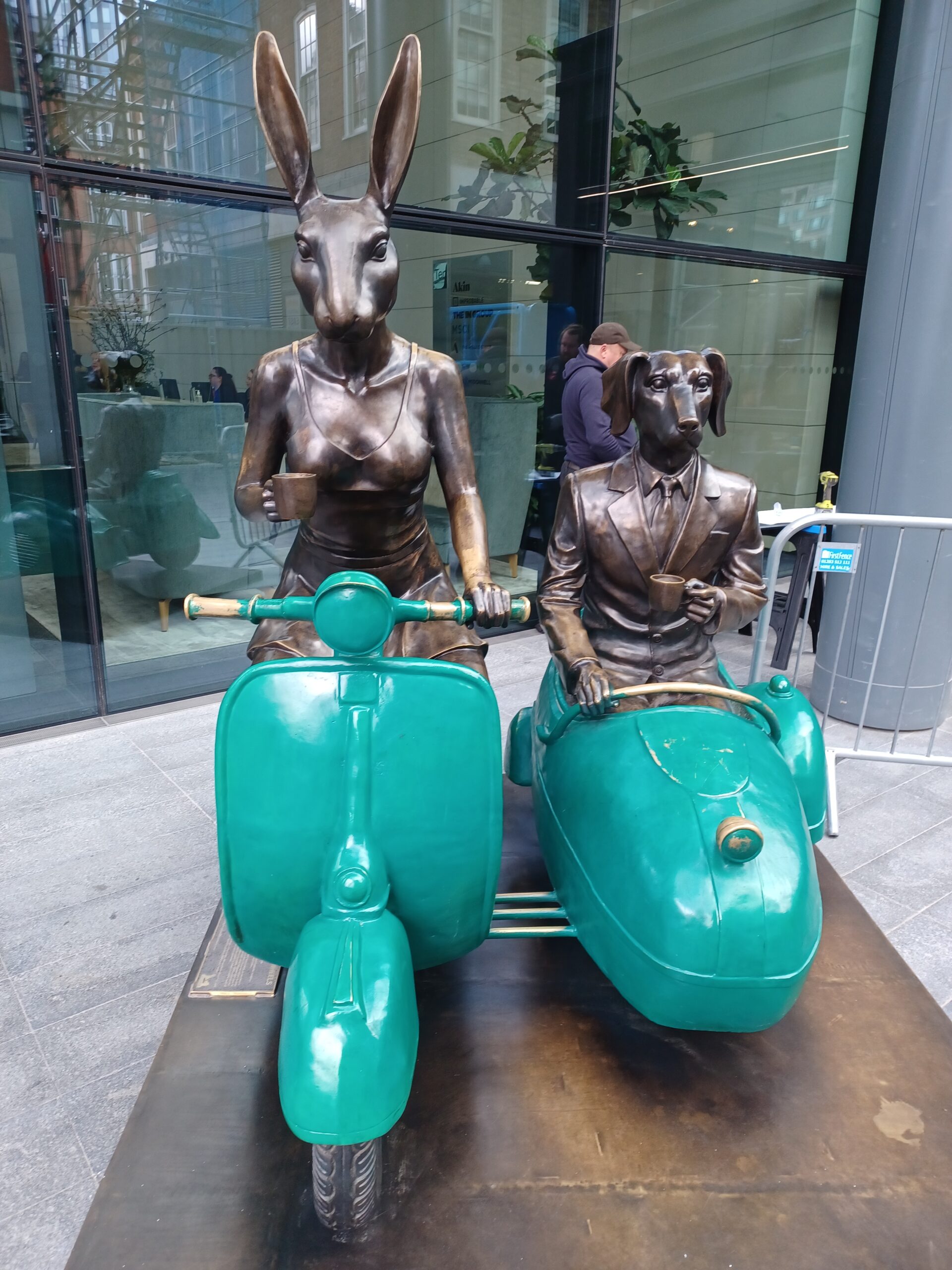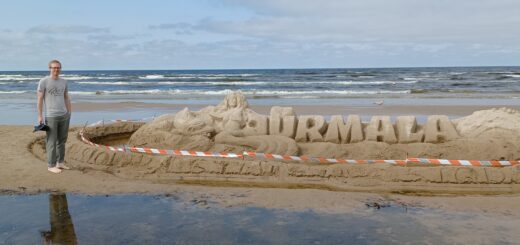Easter in Latvia
Like Christmas, we spent Easter at Pavasari homestead. In Latvia, Easter, or Lieldienas, is a 4-day holiday beginning with Good Friday and ending on Monday with Otrās Lieldienas, or second Easter.

but first…
Bērzu Sula – Birch Juice
Birch juice season is late March to mid-April. We drank copious amounts of this stuff during the Easter holiday.

You collect it by drilling a small hole about the diameter of a dime a small distance into a birch tree. Then, you insert a stick that’s been cleaned and fashioned with a knife to allow the juice to travel away from the trunk and drip into a collection container. Here they’ve used a clean bucket with a plastic bag cover. This single tap will fill a 3-gallon bucket 3 times a day for a few weeks.

The juice is clear like water but slightly more viscous. It has a fresh and subtly sweet taste. It tends to get cloudy and a bit sour after sitting a couple days, so I found it best consumed fresh from the tree. Apparently, the colder the winter, the sweeter the juice.
It can also be used to make still and sparkling wines, schnapps, and syrup. Chefs in some fancier restaurants use it for poaching fish and making sauces.
Okay, let’s start with Palm Sunday. As you can imagine, there are no palms in Latvia, so it seems they’ve been replaced by a plant that blooms around Easter, the willow. Pūpolsvētdiena or “Pussy-willow Sunday” is celebrated by getting up early and gently spanking family members with switches of willow with requisite catkins while chanting something like “Apaļš kā pūpols, vesels kā rukts … Slimība ārā, veselība iekšā.” which means something like: round as a catkin, healthy as a radish … illness out, health in.

The Thursday before Easter is known as Zaļā Ceturtdiena, or “Green Thursday.” I guess it’s called Maundy Thursday in the English-speaking world, commemorating the Last Supper. In Latvia, you should not pick any green and growing plant on this day. You’re also supposed to eat green peas on this day, presumably picked on a previous day, so plan ahead! I assume this usually means from the previous season since I can’t imagine anyone has peas in the garden already.
Good Friday is called Lielā Piektdiena, literally “Great Friday”. I think old Latvians must have been really preoccupied with witches as the idea comes up a lot in various folk tales, traditions, and celebrations. Apparently, on Good Friday, unless you want witches to visit your friends and family, you should stay home. Last I checked, everyone I visited says they’re witch-free and doing well, but… that’s what a witch would have them say. I guess only time will tell 😉
The Saturday before Easter is called Klusā Sestdiena, which means “Quiet Saturday.” It’s presumably a time of quiet reflection, but also the day most households color eggs.

Using natural materials and dyes such as onion skins and tea is still very popular in Latvia. The first order of business when dyeing eggs is to collect the necessary materials. Here we are with some leaves and flowers we collected in the yard along with some old socks, uncooked eggs, and string.

Using the string, leaves and flowers were affixed to the eggs. This step is to add natural patterns to the finished product as well as some additional coloration.

The eggs were then placed in the old socks, or in this case, a piece of hosiery, and tied up into a pouch. I assume this keeps everything in place while the egg is boiled.

Egg dyes are created using tea, wool threads, tree buds and leaves, or in this case, with dried onion skins. We also tried tea, but I don’t think it worked as well as the onion skins.
The egg pouches are then boiled in the colorant for about 15 minutes.
Voilà

As with Christmas, a big batch of homemade pierogies were made and served with a hot cup of chicken stock and dill garnish. Soooo good!
Easter Sunday is called Lieldienas, literally, “the Big Days,” yes, it’s plural. Pavasari homestead was visited in the morning by the Lieldienu zaķis (Easter bunny), who inconveniently hid a bunch of eggs and candies around the property, but also thoughtfully left a letter detailing how many were taken. It was such a beautiful day that after the eggs were relocated we took a trip to town to see the festival being held in the city park.


Back at the homestead we engaged in a few other Easter traditions. Here’s Christina swinging. Apparently, swinging during Easter will protect you from mosquito bites during the summer.
We also played an impromptu game of egg rolling: roll an egg down a ramp aiming for the candies and other eggs which have been placed at the base. Successful hits can be collected as prizes whereas unsuccessful eggs remain where they land and can be claimed by subsequent egg rolls.
Egg Battles:
Apparently, variations of this game occur in many cultures, going back centuries. As far as I could determine, the local rules of egg battling are as follows: each person selects an egg and starting with the small end of the egg they crack them together hoping to break their opponents egg. This is then repeated on the other side. An egg with two broken ends is a loser and is claimed by the owner of the winning egg. An egg with only one broken side lives to fight another battle. The last person with an unbroken egg, or end of an egg, is the winner – and, I guess, will live the longer life. Turns out, I’m destined to have a lot of egg battles 😉
The weather was so nice that we had Easter dinner outside by the garden house. But, no matter how warm and how much I tried to escape the yoke of my jacket, and germ theory notwithstanding, the “saimniece” insisted I ran the risk of getting sick without it. It was really that nice of a day though.
Pro tip: watch for the people who eat Easter eggs without salt, they will undoubtedly be liars until next Easter.

The Monday after Easter is known as Otrās Lieldienas, or (Second Easter, also plural). We spent the day eating eggs and toasting.
It was another beautiful day. Here is the sunset on our trip back to Rīga.
Sorry for such a late post. We hope you all had a very priecīgas Lieldienas!

Čau for now.





How did I miss such a lovely post? Haha, loved the Pussy Willow Sunday spankings. The pierogies looked delicious and the naturally decorated eggs were absolutely beautiful! Do you use the decorated eggs for the egg battles? You guys are way too cute. Cheers to no mosquito bites! 🙂
Hi Lilly! Yes, we used the dyed eggs for all the egg festivities. There was a second batch we dyed with tea that I didn’t get pictures of.